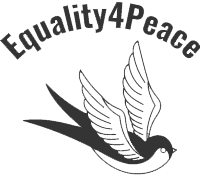Are you ready to meet your next level? Click here to book your free discovery call
Hey, My Name Is Betty C. Dudney


This Is Where It All Began
To write a good origin story, you need to start with a distinctive background. Establish the world and highlight all unique features and rules. Paint a picture that draws someone in. Weave in elements of your past that shaped your motivations and actions. Ensure the beginning plants the seed for how you ultimately became the person you were meant to be.
Try to keep this part to about 75 words or under. Don't overwhelm them with everything at once. This is just a taste. Your goal here is to make them want to read the next part.

But Then, Everything Changed
If you're looking to nail a pivotal moment in your origin story, think of it like a pressure cooker. You've been building up tension and conflict. Now, it's time to let it explode. Make sure your readers know why this moment is a big deal – what's at stake. Get into your head. Why did you act that way? Don't forget to paint a picture with your words; make us feel like we're right there.
This moment should shake things up – change your character's journey or how they see the world. Lastly, what happens next? This should set off a chain reaction that keeps your story moving. 100 words is a good target for this section.
Off In The Distance, A Silver Lining
This is where you want to highlight a key part of your origin story that served as a turning point. Focus on something short, sweet, and punchy. Notice how an image in the background helps to communicate visually what you have written. Make sure it complements your story (no random stock photo).
The shorter you can keep this point the better as people will naturally scroll and if they like what they see here, they may go back to the beginning and read the whole story.

Little Did I know
Tell the reader what is about to happen. Bring them behind the scenes for what is about to unfold. This is the place to convey an important piece of advice or something you learned. Done right, this will not only further tell your story, it will leave them with a nugget of wisdom.
People love learning from the mistakes of others. They love avoiding pitfalls that are easy to fall into. Genuinely convey the aha moment or the unexpected turn that led to your discovery, and make sure to be clear and concise about what the event actually was.
Try to keep this in the 100 word range. You can take some latitude if your story is especially compelling but be sure to break it up in sections as this is how people like to read. Thankfully, Personify helps you do this with ease. Try duplicating sections and playing around with the layout.

Then Finally, The Turnaround I Needed
This is the transformation. In the resolution of the origin story, you embrace destiny. With newfound strength and understanding, explain how you reconciled the past and present, ready to face the future.
Done right, your reader will identify with your story and see you as their trusted friend and guide. Short and sweet is generally better.
In the end My Mission became
This is who you are and what you stand for. It is aspirational but attainable. Clear and concise. People should want to do business with you because of your mission and it should define your outlook professionally, and sometimes, even personally.

Hey, My Name Is Jessica
Now that you are known, this is the place you formally introduce yourself. Without an origin story, people wouldn't have joined you in the struggle. You would have been just another gal (or guy) on the internet. Instead they know you a little better, maybe even rooting for you.
This is the time to convey who you are and what you do. Explain what you want people to know and what you want them to do next. Speak as though you are talking to a friend.
This is what we call a transition section. Their purpose is not to stay but to be taken to the next step of the journey.
My Core Values
If you're thinking of writing core values, think of it like setting the heartbeat for your brand. Start by getting a mix of people together – family, friends, or your team. You want your leaders, your dreamers, your doers, everyone! Then, have a chat about what makes you tick. What are the stories, the big wins, or even the tough lessons that define you?
You're looking for those golden nuggets, the values that make everyone nod and say, "Yes, that's us!" These values should be easy to get and help you naturally filter the wrong people and attract the right ones.
Imagine these values as your brand's compass. They're not just fancy words for a website. They're the guiding stars for all the choices you make. It's about creating a vibe that everyone can feel and say, "This is why we're here. This is what we stand for."

